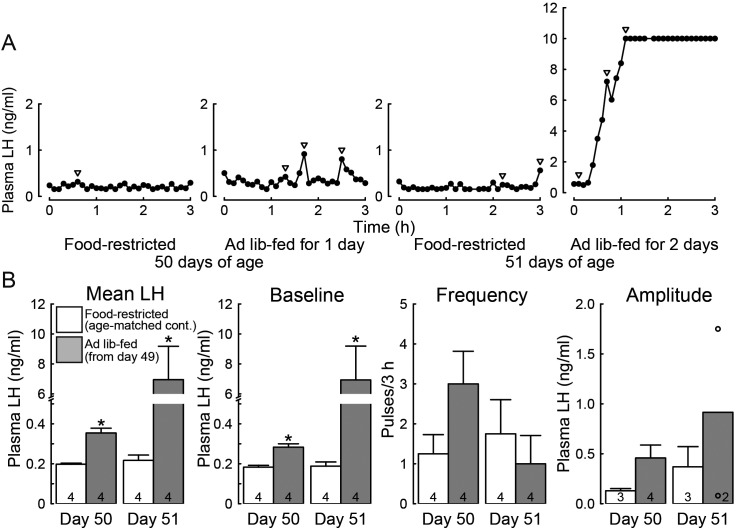Fig. 3.
Ad libitum feeding induced tonic and surge-like increase in luteinizing hormone (LH) secretion in the growth-retarded female rats. (A) Representative plasma LH profiles in the ad libitum-fed rats on 50 and 51 days of age (24 and 48 h after the resumption of ad libitum feeding) and the age-matched food-restricted controls. Arrowheads indicate LH pulses identified with the PULSAR computer program. Blood sampling was started from 1300 h. Note that the ad libitum-fed animals on 51 days of age showed a surge-like increase in plasma LH concentration and the concentrations were often higher than the upper detectable level. (B) Mean LH concentrations, baseline, frequency and amplitude of LH pulses in the ad libitum-fed rats on 50 and 51 days of age (24 and 48 h after the resumption of ad libitum feeding) and age-matched food-restricted controls. Values are expressed as the mean ± SEM. Numbers in each column in the graphs for mean LH concentration, and baseline and frequency of LH pulses, indicate the numbers of animals used. Numbers in each column in the graph for the amplitude of LH pulse indicate the numbers of animals showing detectable LH pulses during the 3-h sampling period. Note that LH pulses were detected in two out of four ad libitum-fed animals that showed a surge-like LH increase. Open circles indicate the mean values of pulse amplitude in those individuals. Asterisks indicate significant difference in mean LH concentration or baseline of LH pulses between the ad libitum-fed rats and the age-matched food-restricted controls (* P < 0.05, Student’s t-test).

